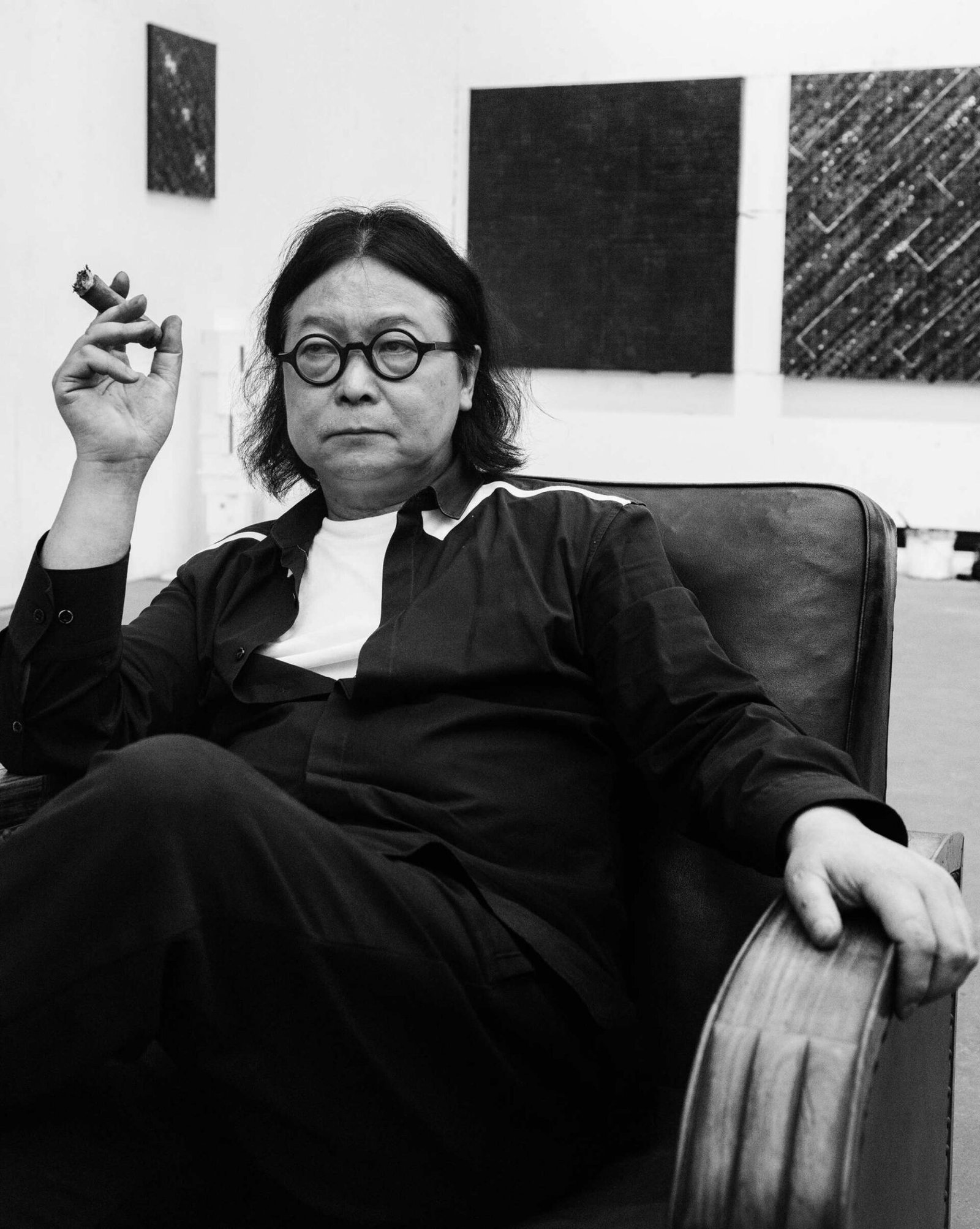A retrospective exhibition at the Shenzhen Museum of Contemporary Art and Urban Planning showcases the decades-long dedication of Shanghai artist Ding Yi to a very specific subject: the tiny, hand-drawn plus signs and repetitions of the letter ‘x.’ Ding, 61, has been persistently covering monumental paintings with these symbols for over 35 years. Titled “Cross Galaxy,” the exhibition reveals the evolution of Ding’s “Appearances of Crosses” series through around 60 examples.
A prominent feature at the entrance of the gallery is a replica of “Appearance of Crosses I,” which is a near-square divided into three vertical strips in red, yellow, and blue. The original, created in 1988 while Ding was a student at Shanghai University, was repainted in 2020 and 2021 by the artist. The painting represents a shift from the emotional tumult of Ding’s earlier works, which were created during an era of liberation after the Cultural Revolution. These early paintings, such as “Breaking the Sacrifice” and “Taboo,” feature rough, furious brushstrokes and stormy backdrops. Ding explains that during the Cultural Revolution, crosses symbolized criticism and denial.
However, as his contemporaries began to infuse their art with political meaning, Ding chose to eliminate memory and context from his works. He decided that creating something entirely new required a rational approach to abstraction that did not refer to real-life objects. This led to a decade of creating “pure” abstractions, featuring repetitive rows of plus signs, x’s, and asterisks spread evenly across the canvas. Eventually, Ding started to incorporate explicit references to the world around him, inspired by the dramatic changes occurring in Shanghai.
The exhibition includes dazzling red-and-gold panels suggesting the outline of China, intricate works reminiscent of Go chess boards, and a room filled with ceiling fans covered in painted crosses. Ding’s art, while initially inspired by a period of intense change and liberation, has evolved into a meditation on individuals’ relationships with the collective and their positions in history. Although he denies any religious or political undertones in his work, Ding admits that with age, he is less determined to be removed from reality.
READ MORE:
